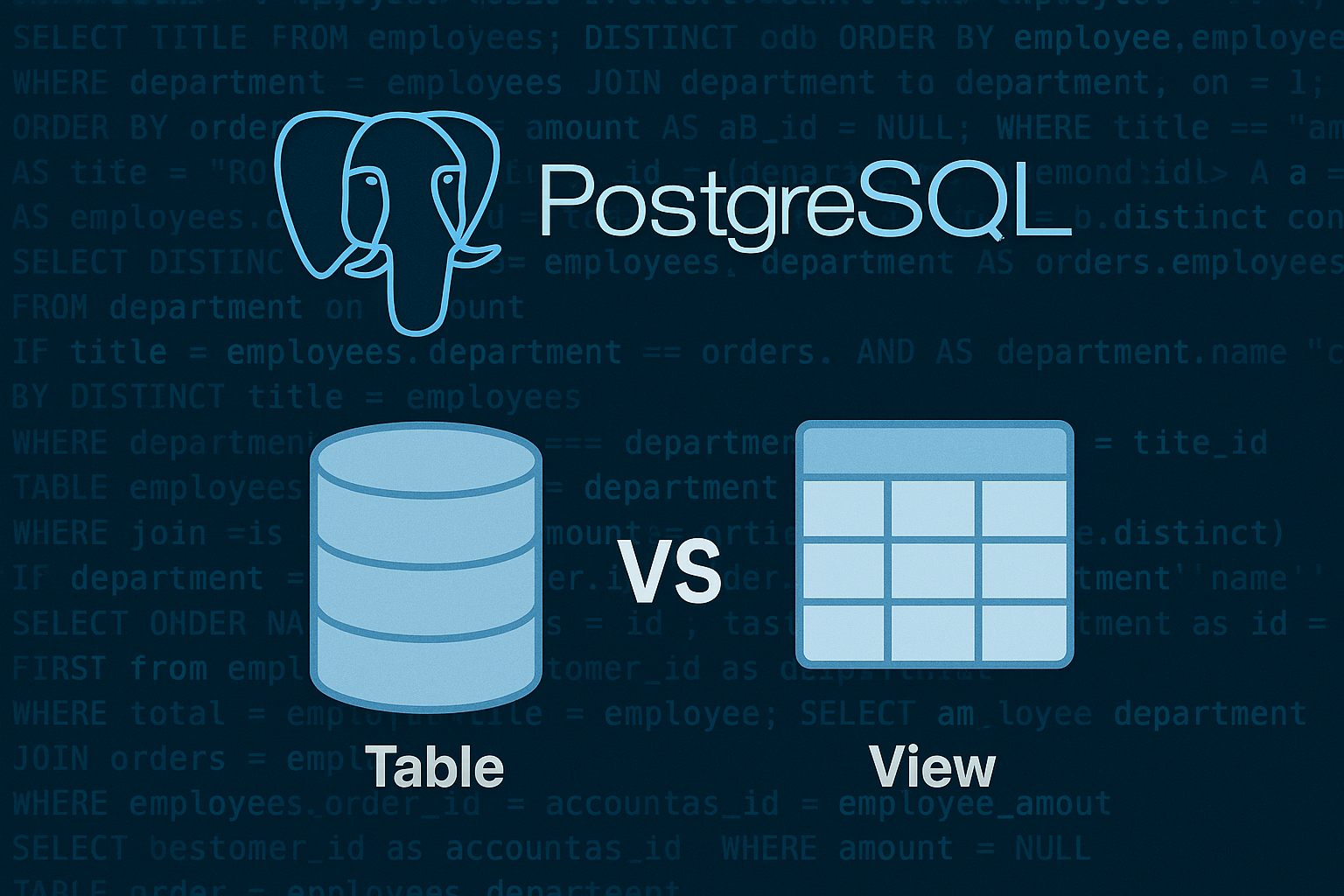20 Oct, 2023
PostreSQL Tables v Views
Understand the key differences between two seemingly similar ways of viewing contents of a data warehouse

Krystian Bucko
@KrystianBucko
Let’s start with the basics!
What is a Table in PostgreSQL?
A table is a physical structure in the database that stores data. This can be compared to a spreadsheet with rows and columns.
Key Characteristics:
- Stores data physically on disk.
- Can be inserted into, updated, and deleted from.
- Has a defined schema (columns, data types, constraints).
- Used for long-term storage of data.
Example
CREATE TABLE employees (
joined TIMESTAMP,
name VARCHAR(255),
department VARCHAR(255),
salary BIGINT
);
What is a View in PostgreSQL?
A view is a virtual table. It doesn’t store data itself but presents data from one or more tables via a saved SQL SELECT query.
Key Characteristics: -Does NOT store data; it’s just a saved query. -Can be ‘useful’ for security (e.g., hiding certain columns). -Runs one or more underlying queries when refreshed.
CREATE VIEW high_salary_employees AS
SELECT name, salary
FROM employees
WHERE salary > 100000;
Differences: Tables vs Views
| Feature | Table | View |
|---|---|---|
| Data storage | Stores data physically | Does not store data |
| Purpose | Store and manage data | Present data in a specific way |
| Query Performance | Generally faster (no re-querying) | Slower (runs underlying query each time) |
| Dependencies | Independent | Depends on tables and other views |
| Security | Less granular | Present exactly what is needed |
| Maintenance | May require indexing, tuning | No physical tuning, but query can be tuned |
Bonus: Materialized Views
Like views, but they store the result of the query physically. Useful when performance matters, but data doesn’t need to be real-time. Must be manually refreshed:
CREATE MATERIALIZED VIEW employee_summary AS
SELECT department, COUNT(*) as num_employees
FROM employees
GROUP BY department;
-- Later, when you want fresh data:
REFRESH MATERIALIZED VIEW employee_summary;
Use Cases
So finally, with so much to chose from, what should we use and when?
- Tables: When you want to store and manage data directly.
- Views: When you want to present specific and/or mixed datasets.
- Materialized Views: When performance matters and you’re okay with slightly stale data.